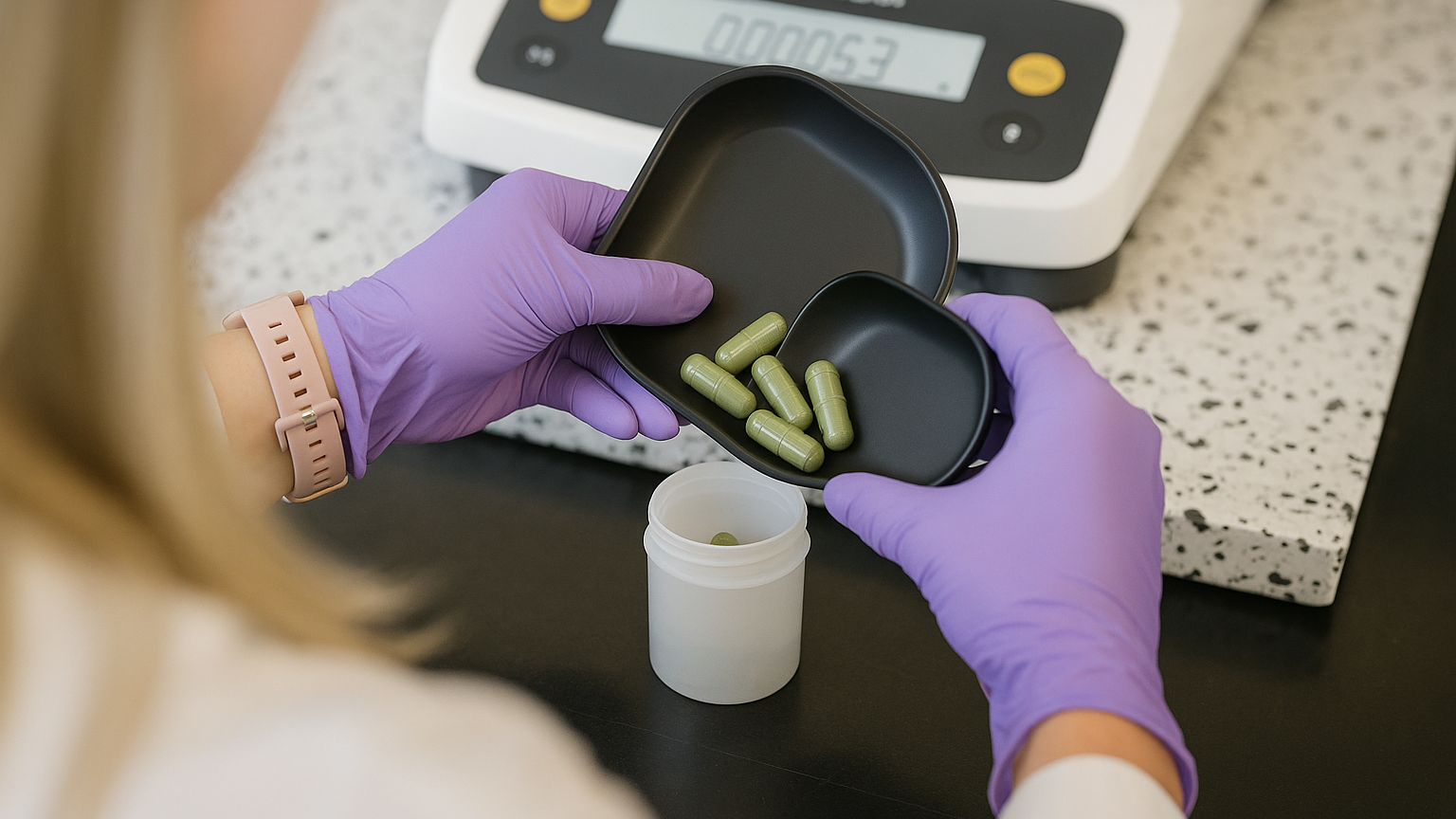Breakthrough: Synthetic Cannabinoid Shows Promise for Treating Cancer-Related Weight Loss
Scientist wearing gloves handling medical capsules in a laboratory, symbolizing synthetic cannabinoid research and new medical cannabis applications.
A new synthetic cannabinoid is showing remarkable potential in treating cachexia, a severe form of weight loss and muscle wasting that affects many cancer patients. This development could represent a major advancement in the medical use of cannabinoids — one that expands their role beyond pain management and symptom relief.
Cachexia has long been one of the most difficult cancer-related conditions to treat. Standard medications often fall short, leaving patients struggling to maintain strength and quality of life. Now, researchers believe that cannabinoids — even in synthetic form — may offer a new pathway for improving nutrition, energy balance, and overall well-being in oncology care.As cannabinoid science advances, regulations and liability risks evolve too.. Start with our quick Cannashield intake form to make sure your business is protected as the medical cannabis field grows.
Understanding Cachexia and the Search for Solutions
Cachexia affects up to 80% of patients with advanced cancer, leading to severe weight loss, reduced appetite, and diminished treatment tolerance. Unlike simple malnutrition, cachexia involves complex metabolic changes that make regaining weight extremely difficult — even when patients eat more.
Traditional treatments focus on stimulating appetite or slowing muscle breakdown, but progress has been limited. That’s why the emergence of a synthetic cannabinoid treatment is generating so much attention.
Researchers discovered that this new compound interacts with the body’s endocannabinoid system, which plays a role in regulating appetite, metabolism, and inflammation. Early findings suggest that this cannabinoid could help restore appetite and improve body composition by influencing these pathways — without the psychoactive effects associated with THC.How Synthetic Cannabinoids Are Changing Medical Cannabis
While the word “synthetic” can raise eyebrows, these lab-created compounds are designed to mimic the therapeutic benefits of natural cannabinoids while allowing for greater precision and control. Synthetic cannabinoids can be produced with consistent purity, predictable dosing, and targeted effects — making them ideal for pharmaceutical research.
For medical cannabis advocates, this represents a significant step toward mainstream medical acceptance. The ability to standardize cannabinoids could help physicians integrate cannabis-based therapies into clinical care with confidence. It also signals that global medical regulators are taking the science seriously.
Of course, synthetic cannabinoids also highlight a familiar challenge: the need for clear regulatory frameworks that ensure patient safety while encouraging innovation.If your company is exploring medical cannabis products or partnerships, Complete our Cannashield questionnaire to ensure compliance and insurance coverage in this rapidly evolving sector.
Expanding the Role of Cannabinoids in Medicine
The growing body of research surrounding cannabinoids continues to reshape the boundaries of modern medicine. What began as anecdotal evidence for pain relief has evolved into a robust scientific field exploring treatments for:
• Appetite loss and weight disorders (like cachexia)
• Chronic pain and neuropathy
• Anxiety, PTSD, and insomnia
• Inflammatory conditions
• Neurodegenerative diseases such as Parkinson’s and Alzheimer’s
This new synthetic cannabinoid reinforces the idea that cannabis compounds have untapped medical potential — not just for symptom management, but as part of comprehensive treatment strategies.
As the healthcare industry embraces cannabinoids more fully, the cannabis sector must continue to balance innovation with compliance, product integrity, and consumer safety.Preparing for the Future of Medical Cannabis
Advancements like these don’t just expand scientific understanding — they also influence policy, insurance, and operational risks for cannabis and biotech companies. As cannabinoids move further into the pharmaceutical space, businesses will need to:
1. Strengthen compliance programs around testing, labeling, and patient safety.
2. Secure specialized insurance coverage for cannabinoid-based research and production.
3. Stay informed on FDA and state-level regulatory shifts.
These steps not only protect businesses legally but also build credibility in a space where public trust is still forming.Don’t wait for regulation to catch up. Fill out our Cannashield intake form to secure your operation and prepare for the next era of medical cannabis innovation.
Conclusion
The discovery of a synthetic cannabinoid that helps treat cancer-related cachexia is a breakthrough moment for cannabis-based medicine. It represents hope for patients and validation for an industry long advocating the therapeutic power of cannabinoids.
As research progresses, the line between cannabis and mainstream medicine continues to blur. For businesses and practitioners, that means one thing: prepare now for a future where cannabinoids are central to healthcare innovation.
At Cannashield, we help cannabis and hemp operators stay compliant, insured, and ready for what’s next. Whether you’re developing products, investing in research, or managing patient care, our mission is to protect your business and its role in shaping the future of cannabis medicine.
Read the full article here →

